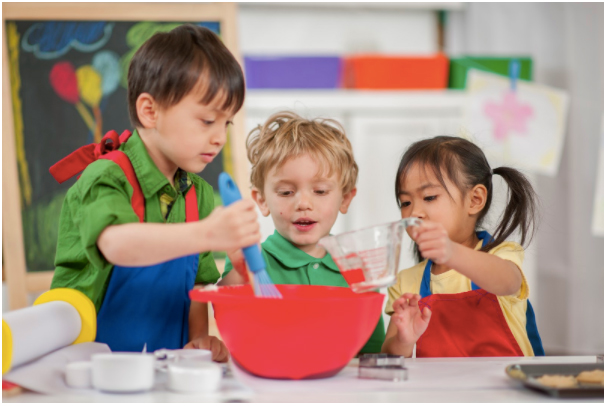To Hide or Not To Hide? – Serving Vegetables To Picky Little Eaters
- Written by: CHEERS Team

“I don’t want to eat that!”
Does this sound familiar? If so, you’re not alone. Food pickiness, known as neophobia, is common among preschool-aged children.1 When dealing with picky eaters, many parents will often try to disguise ingredients to sneak undesired fruits or vegetables into a child’s diet. In fact, many cookbooks and websites even encourage this practice! One quick google search will confirm endless results for “hidden vegetable recipes”. However, it is important to keep in mind the possible unintentional effects of hiding ingredients in your child’s diet.
For instance, children, even at a young age, have the ability to assess whether an information source is accurate.2 This includes parents, caregivers, and even the media. Children often evaluate and categorize food in their minds as either “good” or “bad” based on taste.2 When a child is tricked into eating food they dislike; the end result can be the adult losing credibility as a source of information to that child. We have to constantly keep in mind that children are ‘Mighty Learners’.3 They pay close attention to the accuracy of information presented to them and are even aware of any “ill intent” they may perceive.
But how do we ensure that even the pickiest eaters are getting the nutrients they need to nourish their growing bodies? Rather than tricking children, involve them in mealtime decision-making. Presenting a child with a choice, such as, “would you like carrots or broccoli” allows them to express their preferences in food while keeping the choices healthy options. This can be a positive experience for children as they hope to influence the 200 or more food and beverage choices made daily by their parents.2
Another positive food experience for children that often opens them up to trying new foods is involving them in the food preparation process. When children get the opportunity to not only decide what they get to eat but also get to help make the food – children feel more involved and more motivated to eat the meal. Including children in the food preparation process can be as easy as having them measure ingredients or wash vegetables while providing you with additional opportunities to have discussions about healthy eating choices.4
The take-home message – children need many opportunities to explore food. Creating positive food experiences early in a child’s life allows them to develop a healthy relationship with food that will affect their habits and attitudes as they grow up.
For some ideas on kid-friendly recipes to try at home, check out the following links:
- Healthy Recipes Kids Can Make – https://cheerskids.info/s39
- Kids’ Cooking Recipes – https://cheerskids.info/q4b
- Recipes To Make with Kids – https://cheerskids.info/5g5
References
-
Rioux, C., Lucas L., & Lafraire, J. (2018) Inductive reasoning, food neophobia, and domain-specificity in preschoolers. Cognitive Development, 47,124-132. https://doi.org/10.1016/j.cogdev.2018.05.001
-
Nguyen, S.P., Gordon, C., Chevalier, T., & Girgi, H. (2016) Trust and doubt: An examination of children’s decision to believe what they are told about food. Journal of Experimental Child Psychology, 144, 66-83. https://doi.org/10.1016/j.jecp.2015.10.015
-
Makovichuk, L., Hewes, J., Lirette, P., & Thomas, N. (2014). “Flight: Alberta’s early learning and care framework.” Retrieved from flightframework.ca
-
Government of Canada. (2019). “Canada’s food guide: Involve kids planning and preparing meals.” Retrieved from https://food-guide.canada.ca/en/healthy-eating-recommendations/cook-more-often/involve-others-in-planning-and-preparing-meals/involving-kids-in-planning-and-preparing-meals/